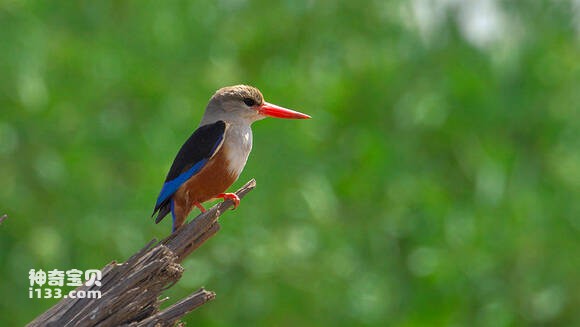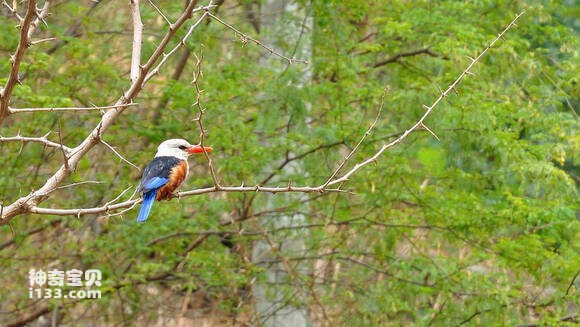Halcyon leucocephala
IUCN
LCBasic Information
Scientific classification
- name:Halcyon leucocephala
- Scientific Name:Halcyon leucocephala,Gray-headed Kingfisher,Chestnut-bellied Kingfisher
- Outline:Climbing birds
- Family:
Vital signs
- length:21-22cm
- Weight:46-57g
- lifetime:No textual research information is available
Feature
Distribution and Habitat
It is found in central and southern Africa (including the southern Arabian Peninsula and the entire African continent south of the Sahara Desert (Tropic of Cancer).)
It inhabits woods, grasslands, shrubs, bushes, spiny bushes, parks and crop areas. Almost all land, but isolated from dense forests and arid or semi-desert areas. It lives near the river banks.
Appearance
The grey-headed emerald is 21-22 cm long, with a wingspan of 32-34, and weighs 46 g for males and 57g for females. Despite their small size, they are the most beautiful bird species in Africa, with brightly colored plumage. The mouth and feet are red. Head and chest light gray or light brown, rump, tail, including secondary and flight feathers cobalt blue or bright purple. The belly and wings are red or chestnut. The sexes are almost identical, except that the female is slightly heavier. There are five subspecies that differ mainly in the blue color of the head and the gray variation of the wings.
Details
Halcyon leucocephala, Gray-headed Kingfisher, Chestnut-bellied Kingfisher, there are five subspecies.

The grey-headed emerald bird song is usually like a cry, and is made up of a set of "it, it, it, it, it, it, it," fast, rough, and rolling. But it also produces a set of fast "tchi-tchi-tchi-tchi tchi" and fast staccato sounds。

The grey-headed emerald is entirely carnivorous. It eats mainly main locusts, a wide variety of insects and arthropods, but also small vertebrates such as small fish, small snakes and lizards, young birds in the nest and small mammals。

The grey-headed emerald nests on earth cliffs or river embankments, using their mouths to dig tunnelled burrows, 50 cm and 1 m deep. These caves are generally bare of bedding. The eggs are laid directly on the nest ground. The female lays three eggs at a time, which are incubated by both parents for 16 to 21 days. Eggs are nearly round, pure white.
Listed on the International Union for Conservation of Nature (IUCN) Red List Protection Level: Not Threatened (LC).
Protect wild animals and eliminate wild meat.
Maintaining ecological balance is everyone's responsibility!








